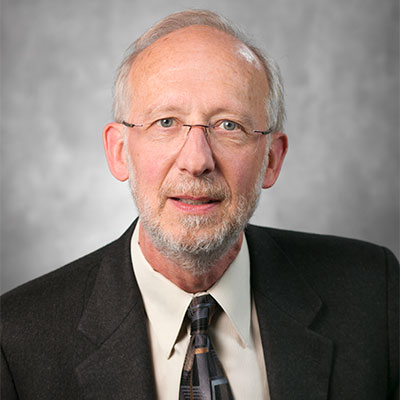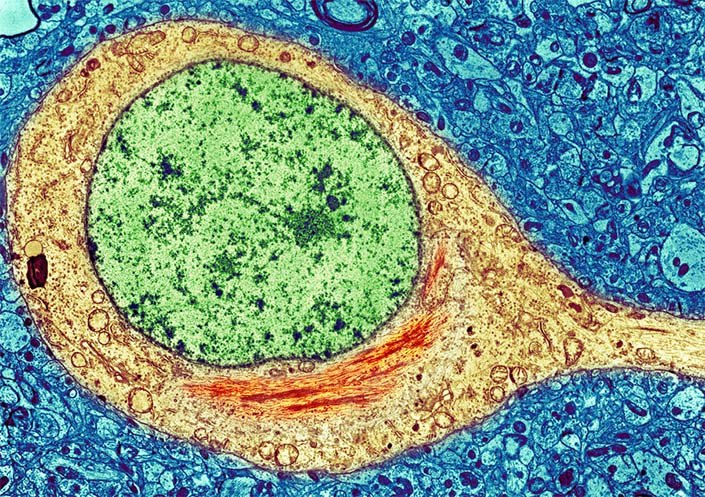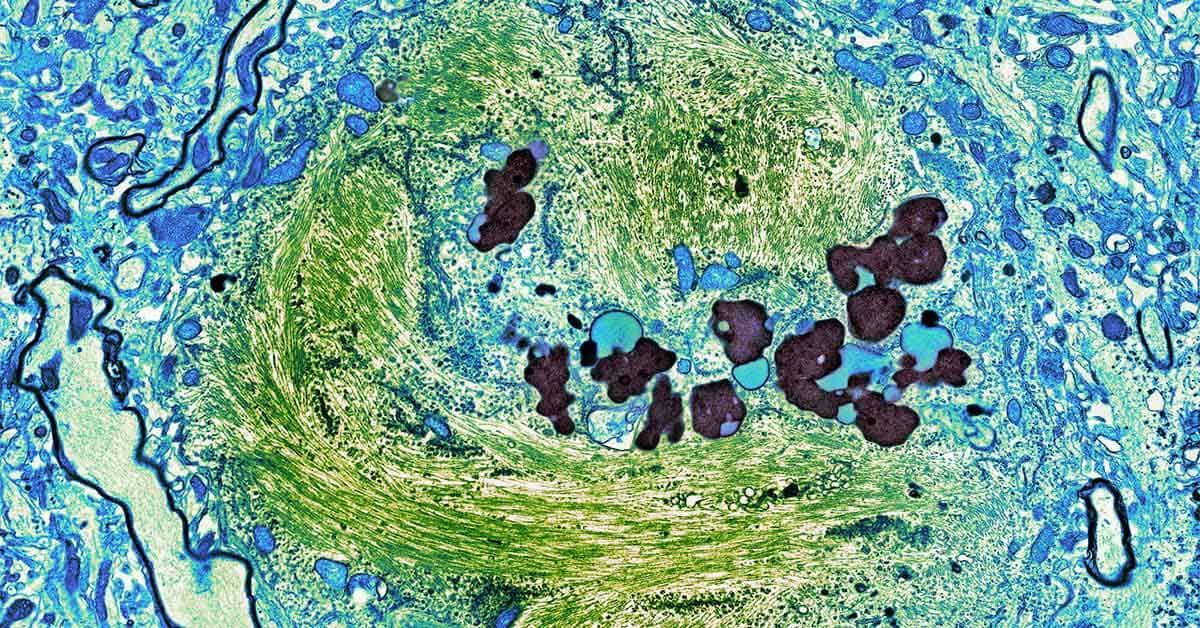Don Cleveland Wins a Trifecta of Recognition
The much-acclaimed researcher, who investigates how cells work and why they sometimes don’t, is the recipient of three highly regarded prizes honoring a distinguished career that isn’t over yet
Story by:
Published Date
Story by:
Topics covered:
Share This:
Article Content
Don Cleveland, PhD, Distinguished Professor of Medicine, Neurosciences and Cellular and Molecular Medicine, is no stranger to awards and honors over the course of his storied career.
In 2017, for example, he was a recipient of a $3 million Breakthrough Prize that recognized his seminal work in describing how brain cells grow normally and how defects lead to inherited diseases, such as amyotrophic lateral sclerosis (ALS) and Huntington’s disease.
In 2022, he was listed (again) among the most highly cited researchers in the world, with his 552 published papers mentioned by peers more than 75,000 times. A different ranking system dubbed him among “The World’s Most Influential Scientific Minds.”
He is an elected fellow of the National Academy of Sciences (2006), the Institute of Medicine (2012), the American Academy of Arts and Sciences (2006), the American Academy of Microbiology (2006) and the American Association for the Advancement of Science (2009).

Through the years, Cleveland has won a lot of awards. And yet, the last few weeks have proven to be a remarkable period of recognition.
In December, Cleveland received the E.B. Wilson Medal from the American Society of Cell Biology for his contributions to cell biology over the course of a career and the Lalji Family ALS Award, with three colleagues, from the Sean. M. Healey & AMG Center for ALS at Massachusetts General Hospital for their discovery of a therapeutic target gene with the potential to repair and restore neurological function in ALS patients.
On January 26, Cleveland was named a recipient of The Rainwater Prize for his pioneering work identifying and characterizing tau, a protein whose abnormal accumulation in the brain is a key component of numerous cognitive disorders, including Alzheimer’s disease (AD), frontal temporal dementia and chronic traumatic brain injuries.
“From my earliest memories, I was always going to be a scientist,” said Cleveland. “After a lifetime of work, it’s both gratifying and humbling to have that work recognized by receipt of some of the world’s most prestigious awards for scientific discovery in two fields — genome instability in cancer and development of designer DNA drugs for therapy for neurodegenerative diseases.”
Cleveland has built his career upon a sustained and relentless effort to better understand the basic biology of cells, how genes, chromosomes and proteins function normally and, more critically, why they sometimes don’t, resulting in a host of diseases, from neurological dysfunction to cancer.
“I think he is a cell biologist’s cell biologist, using all tools in the armamentarium, including biophysics, cell biology, molecular biology, and mouse genetic models,” said Marc W. Kirschner, the John Franklin Enders Professor in the Department of Systems Biology at Harvard Medical School. (Cleveland worked with Kirschner to earn his doctorate in biochemical sciences at Princeton University in 1977.)
Cleveland and colleagues have made multiple groundbreaking discoveries, including identifying key steps that trigger and accelerate ALS, a progressive neurological disease that afflicts approximately 18,000 Americans and the cause of Huntington’s, another progressive neurological condition that affect nearly 30,000 people in the United States.
Currently, neither disease is curable, but some of Cleveland’s work is moving closer to clinical use. He and colleagues are credited with developing the concept of designer DNA drugs to silence genes involved in the development of AD, Huntington’s, ALS and cancer.
“Almost 20 years ago, we recognized that human geneticists had identified genes whose mutation or increased expression was causative or contributory to the major degenerative diseases of the aging human nervous system, including Alzheimer’s disease, Parkinson’s disease, Huntington’s disease and ALS.
“So we thought, ‘Let’s develop a method to turn down or turn off those genes.’ That was the birth of the use of designer DNA drugs in the human nervous system. There was a big problem, however: Everybody knew it wouldn’t work. These drugs are 10 times the size of a typical drug and heavily charged. There was no pathway known for their successful delivery and uptake throughout the nervous system.
“We tried it anyway. That was the birth of an approach that has now led to eight clinical trials in four diseases of the aging nervous system and one approved therapy in a childhood neurodegenerative disease called spinal muscular atrophy (SMA). We demonstrated that we could deliver the drugs to almost all parts of the nervous system and alter the synthesis of the targeted gene. We discovered to our amazement that these drugs could work for a long time.
“You know, when you take an aspirin, you get three or four hours of relief. For designer DNA drugs it’s not three or four hours or three to four days or even weeks. It’s three to four months! SMA, which affects one in 1,000 kids was the first success. Instead of fatal paralysis in the first year or two of life, the oldest treated children are now seven years old and walking. For an inherited form of ALS, disease progression has been slowed and we are hopeful of Food and Drug Administration approval in 2023. Trials are ongoing in Alzheimer’s, Parkinson’s, and Huntington’s.”
“From my earliest memories, I was always going to be a scientist. After a lifetime of work, it’s both gratifying and humbling to have that work recognized by receipt of some of the world’s most prestigious awards for scientific discovery in two fields — genome instability in cancer and development of designer DNA drugs for therapy for neurodegenerative diseases.”
Progress has not come easily or smoothly.
“There have been bumps. Big bumps. For example, all instances of Huntington’s are caused by mutation in the same gene. In a large clinical trial to turn off that bad gene, we demonstrated success in turning down the gene to a third of the initial level. That was very disappointingly because there was no clinical benefit.
“Perhaps the trial wasn’t conducted for a long enough period of time to detect a benefit. Or perhaps the trial enrolled patients with disease that had already progressed too far to be stopped. There is still hope, however, that the approach can be effective if started at an early disease stage.
(Two pharmaceutical companies that have licensed the Huntington’s drug (called Tominersen) are currently enrolling participants with very early stage disease symptoms in a new clinical trial.)
Cleveland also has a longstanding interest in the genetic causes of cancer, specifically genomic instability. “Genome instability is the hallmark of more than half of human cancers,” he said.
In 2020, he and co-authors published a description of how the phenomenon of chromothripsis breaks up chromosomes, which then reassemble in ways that help mutated cancer cells not only evade treatment, but become more aggressive.
“Chromothripsis occurs when one chromosome appears to be shattered into tens to hundreds of pieces and then stitched back together in random order, missing a few pieces and generating gene amplification in the form of extrachromosomal DNA (ecDNA).
“It’s present in all instances of some cancers and in 25 to 50 percent of all cancers. We have just discovered chromothripsis of chromosome 11 can be triggered by the Epstein-Barr virus, to which almost the entire human population has been exposed. I want to understand the fragmentation and reassembly process, with an eye to developing approaches to diminish or eliminate ecDNA.”
As an “unsophisticated kid from the southern New Mexico desert,” Cleveland attended New Mexico State University where he studied physics, then graduate school at Princeton to study fluid dynamics.
A biochemist at Princeton persuaded him to change career paths to biochemistry even though, Cleveland said, “I had never taken a biology course. I immediately felt way behind all of the other students, a feeling I still have.”
But Cleveland persisted, soon making discoveries that would and have measurably changed scientific understanding and treatment of neurodegenerative disorders.
His secret: “Perseverance. In my view, it’s an essential component for success in science or medicine. Not sufficient alone, but absolutely essential.”

Stay in the Know
Keep up with all the latest from UC San Diego. Subscribe to the newsletter today.




